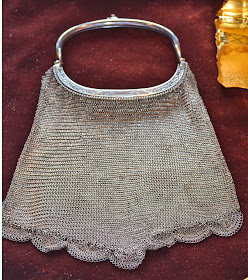by Carmen Doyle
Summer is (almost) here! That means more time to read! Since
November, the History Center has gotten in several new books!
The Iron Men of
Indiana’s 44th Regiment is two volumes. Part 1: Biographies and Regimental Statistics has mini bios of
every soldier who served in the 44th. What’s interesting is the
amount of detail included in each biography- a general description of what the
soldier looked like (for example, John Deardoff “was 5’10.50” tall, fair
complexion, blue eyes, and black hair”) where they fought, and where the
soldier was born, the pension certificate number, and places of residence. If
you’re looking for info on a specific soldier, this book is awesome.
There are
also small chapters on regimental statistics, which had some good information,
such as the nativity of the men in the regiment (mainly German heritage) but it
involved far too many numbers for my taste. I had trouble figuring out the
difference between enrolled, drafted, recruits and subs.
Part 2: Formation and
Photos is full of details such as who would be in a company (each company had
two musicians.) What I found intriguing were the court-martial records, which included the transcript for a trial. If you are interested in the nitty-gritty
details about Civil War regiments, these books are a great resource. There is
so much information, though, that it can be hard for the casual reader to get
into. Great for scholars.
Salt: A Story of
Friendship in a Time of War takes place in 1812. It is the story of two 12
year old boys, Anikwa and James. Anikwa is a Miami Indian and James lives in
the Fort. Their families are good friends, but not everyone else in their
communities even trusts one another. The narrative is a series of almost poems,
each section alternating between the voice of Anikwa and James, with poems
about the importance of salt between them. The book was appealing in the way it
tried to describe how each boy heard rumors about a coming war and how their
families felt about that. The torn loyalties are easy to understand. The
armies- both British and American- look like ignorant bullies or cowards who
have no idea what really happens in the communities. This book is short (less
than 150 pages) so it is an easy read. It was also nice that the author had a
character list and a pronunciation guide for some of the Miami words used. The
torn loyalties are what make this book fascinating.
 |
| Author Helen Frost and members of the Miami Tribe talked about her book at the History Center a few months ago. |
|
Shopping in Fort Wayne
1848 features the same family from A
Trip on the Wabash and Erie Canal. (See the blog post from July 2013.) It
takes place about a week after Trip
ended, and continues to tell about the adventures of Daniel and his family.
This book is about a day in Fort Wayne, where Pa tries to buy everything that
the family will need when they move out to their farm. Daniel visits the cooper,
the tannery, and the blacksmith shop, and each shop features new vocabulary
words and pictures of what the tools mentioned look like. I had no idea what an
adze or a croze looked like or what they were used for until I read this!
The History Center got in two cookbooks, Blue and Grey Cookery: Authentic recipes
form the Civil War Years and Johnny
Apppleseed Cookbook: Favorite apple recipes of our land.
I try to make my
family dinner once a week, so I was really interested in seeing if these
recipes could be used for that. Blue and
Grey Cookery has traditional Civil War recipes, with some equivalencies for
modern cooking. Many of the recipes seemed to call for salt pork or shortening.
A lot of the recipes seemed complicated to me (but I’m one of those people who
often wonder how people managed to cook before Bisquick!) The recipe for
sauerkraut was interesting- I didn’t realize it took weeks to make. Germanfest
is coming up- maybe I should try and make my own sauerkraut and compare it to
the kind I get there. The recipe for noodles looked very easy- just flour, egg,
and shortening. It seems like something I not only have the ingredients for,
but don’t need any special equipment to make.
I was more intrigued by the Johnny Appleseed cookbook. I’ve gotten
apples from the Farmers’ Market before (the Barr Street Market is held at the
History Center on Saturdays) and a co-worker recently brought in applesauce
cookies, so I was really curious to see what I could make with apples beside my
attempts at applesauce. I was happy to see several apple pie recipes as my
only complaint at Johnny Appleseed Fest is that no one ever has apple pie, and
I can’t think of any better use for an apple. The book has recipes for pie
crust as well as the apple filling. Just reading the recipes made me hungry!
There is also a recipe for sauerkraut and apples.
I haven’t dared to try any of these recipes yet, so I don’t
know in reality how easy or good tasting they are. But many sounded delicious,
and easy. Maybe this summer I’ll work up the courage to really expand my
cooking abilitie









































